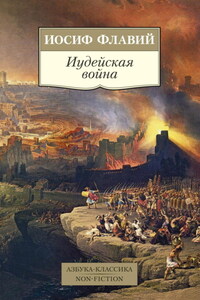CHAPTER I
THE GREAT DOMINION
If you look at a map of North America, you will see that the whole northern half of it is one vast extent, coloured perhaps in red, and stretching north from the boundary of the United States to the Arctic Ocean; you will see that it is deeply indented by the great Hudson Bay on the north, and the Gulf of St. Lawrence on the east; that it has an outline projecting into many bold headlands, and a coast washed by three oceans, fringed with countless islands, great and small.
This is Canada, a land that comprises fully one-third of the 12,000,000 square miles of the British Empire, thirty times as large as England, Ireland, and Scotland combined – not much less in area, in fact, than the whole of Europe. You may realize its breadth by thinking that if you were to get on a train at Halifax on the east, on Monday morning, and travel by the Imperial limited – a very fast train – day and night without stopping, you would not reach Vancouver on the west coast till Saturday morning. In the course of this long journey you would pass through eight large provinces – Nova Scotia, New Brunswick, Quebec, Ontario, Manitoba, Saskatchewan, Alberta, and British Columbia – and you would still miss the island province, Prince Edward, and the great northern territories. Here is a heritage of the Anglo-Saxon race, a new nation indeed, part of the greatest Empire in the world, being fashioned and built up with marvellous rapidity.
We will try to give our readers a few pictures of this new land. A country whose southern parts are in the same latitude as Marseilles, and whose northern islands hide in the everlasting silence of Arctic ice, naturally presents a great variety of physical features, climate, productions, and occupations, and this bewildering variety is increased by difference in age. Down in the east the Tercentenary last year marked the passing of 300 years since Champlain first landed; in the north and west it is rare to find a native born.
There are only about 6,000,000 people in this broad domain, and the settled parts and the large cities are mostly along the south, while the northern areas are in many parts covered by great forests, in which still roam the moose and the elk, the grizzly bear and the grey wolf, while the plash of the hunter's paddle following his line of beaver or otter-traps, or the tap of the prospector's hammer searching for silver or gold, have long been the only echo of the white man. Nomadic tribes of Indians still build their tepees beside the still waters of far inland lakes, and follow the pathless highway of river and stream.
There are no forests in the southern districts of Manitoba, Saskatchewan, and Alberta. Here is one vast open plain, grassy meadow or ploughed land as far as eye can see, the prairie.
The southern part of Ontario, Quebec, and the province of Nova Scotia, are, in appearance, much like England, studded as they are with large towns, prosperous and old-settled farms, and numerous thriving orchards and vineyards. If the rolling, wide prairies, reaching as far as the eye can pierce in every direction, is the chief feature of the provinces of Manitoba, Saskatchewan, and Alberta, the majestic river, St. Lawrence, is the chief feature of the province of Quebec, and four big lakes, or rather inland seas, are the principal feature of Ontario. It is between two of these large lakes, Ontario and Erie, on the one side, and a third larger lake, Huron, on the other, that the above-mentioned garden-like part of the province of Ontario is situated. The fourth lake, Superior, the biggest of all – nearly as big as all Scotland, in fact – lies farther to the west, and stretches for 400 miles along the south of Ontario. There is yet a fifth big lake, closely connected with these four – namely, Michigan – but it belongs to the United States rather than to Canada.
"Domed with the azure of heaven,
Floored with a pavement of pearl,
Clothed all about with a brightness
Soft as the eyes of a girl;
"Girt with a magical girdle,
Rimmed with a vapour of rest —
These are the inland waters,
These are the lakes of the West."
The province of British Columbia, which is separated from the rest of Canada by the great range of the Rocky Mountains, is itself a "sea" of tumbled mountains, which reach all the way from the Rockies to the Pacific Ocean, and, like the northern portion of the Dominion, is covered with forests. Here again there are several large rivers, such as the Fraser and the Columbia, and a great many lakes. British Columbia is an exceptionally highly favoured region. Not only is she rich in natural resources – minerals, fish, lumber, fruit – but she can boast of scenery which can vie with that of Norway, as with that of Scotland, and even with the scenery of Switzerland.
Take, for instance, the Grand Cañon of the Fraser River. This is "a narrow gorge, where the river winds its tortuous way between great broken walls of cliffs, dashing against the huge black boulders which lie in its path, covering them with white foam and spray. As the cañon expands, the scene is varied by glimpses of Chinese gold-washers on the gravel-bars, or Siwash Indians fishing with dip-nets from the rocks for salmon; while here and there are scattered drying-frames festooned with red flesh of the salmon, and fantastically decorated Indian graves give a weird touch to the scene. Here the mountains of the coast range, which the river passes, rise to heights varying from 6,000 to 9,000 feet above the level of the sea. They are extremely rugged and densely wooded, the south and western slopes especially, luxuriantly covered with the characteristic growth peculiar to the humid climate."








